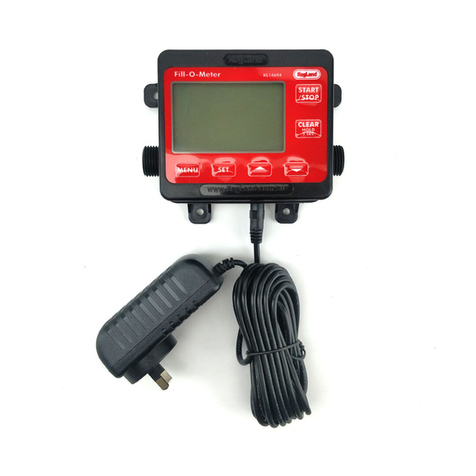RAPT Pill Hydrometer & Thermometer Quick Start Guide
Page 8of 10 www.KegLand.com.au Last Updated 1/12/2021 12:53 PM
2: Advanced Calibration
The advanced calibration mode is recommended for most users
Advanced calibration is also quite quick and easy, and will provide a more accurate result than
Standard Calibration. It is the same procedure as standard calibration, but in addition to water at
1000, have a solution of a known gravity prepared. We recommend using a gravity in the range that
your fermentation will start –1.040-1.060 for typical beers, for example.
As with the standard calibration, place the pill in water wait until the angle has stabilised and then
hit Calibrate. Once that is done, place the Pill in the solution of known gravity and repeat the
process. Once both data points are entered you are calibrated and ready to go!
3: Custom Calibration
Warning! Custom Calibration is for advanced users only. Only proceed if you are comfortable with
spreadsheets and complex curves. If you are working with solutions with gravities higher than 1.080,
then custom calibration is advised.
For advanced calibration, you will need to take readings at various gravity points roughly 10 gravity
points apart, and make a note of the angle of the Pill at each point. We recommend readings from
1.080 down to 1.000, 10 points apart (so, 1.080, 1.070, 1.060 etc). Note that it does not matter if the
gravity readings are not exactly 10 points apart, as long as the gravity reading is correct. Use of a
hydrometer that is known to be accurate is quite important.
To perform the readings, you will need to have the Diagnostics open in one tab, and Calibration in
another. This allows you to see the real time telemetry with the RAPT Pill disconnecting from the
portal. The angle will never be steady, as it is extremely sensitive. Make a note of the reading when
the Pill has stabilised as much as possible.
Once you have sufficient readings, the angle and the gravity need to be entered on an Excel
spreadsheet (or similar such as Google Sheets) as a graph with gravity on the ‘y’ axis and angle on
the ‘x’ axis. The more readings you take, the more accurate this calibration will be. We recommend a
minimum of 6 samples, with 10 or more providing a greater degree of accuracy. Use the Diagnostics
screen for this data –keep the Calibration screen open to prevent the Pill from disconnecting from
the portal.
When you have created the graph, insert a polynomial trend line onto the graph with the degree of
the polynomial being at least one less than the number of data points. If the trend line creates an
irregular curve (such as not passing through the data point at 1.000 correctly or not following a
polynomial shape) reduce the number of data points (ensuring that there are still more data points
than the degree of the polynomial) until the curve matches.
With 10 data points, a polynomial degree between 5 and 8 will typically give the best results.






























